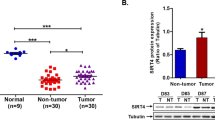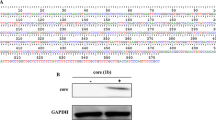Abstract
Chronic hepatitis B virus infection is the dominant global cause of hepatocellular carcinoma (HCC), especially hepatitis B virus-X (HBx) plays a major role in this process. HBx protein promotes cell cycle progression, inactivates negative growth regulators, and binds to and inhibits the expression of p53 tumor suppressor gene and other tumor suppressor genes and senescence-related factors. However, the relationship between HBx and autophagy during the HCC development is poorly known. Previous studies found that autophagy functions as a survival mechanism in liver cancer cells. We suggest that autophagy plays a possible role in the pathogenesis of HBx-induced HCC. The present study showed that HBx transfection brought about an increase in the formation of autophagosomes and autolysosomes. Microtubule-associated protein light chain 3, Beclin 1, and lysosome-associated membrane protein 2a were up-regulated after HBx transfection. HBx-induced increase in the autophagic level was increased by mTOR inhibitor rapamycin and was blocked by treatment with the PI3K–Akt inhibitor LY294002. The same results can also be found in HepG2.2.15 cells. These results suggest that HBx activates the autophagic lysosome pathway in HepG-2 cells through the PI3K–Akt–mTOR pathway.





Similar content being viewed by others
References
Bosch FX, Ribes J, Diaz M, Cleries R (2004) Primary liver cancer: worldwide incidence and trends. Gastroenterology 127(5 Suppl 1):S5–S16
Parkin DM, Bray FI, Devesa SS (2001) Cancer burden in the year 2000, The global picture. Eur J Cancer 37 (Suppl 8):S4–S66
Montalto G, Cervello M, Giannitrapani L, Dantona F, Terranova A, Castagnetta LA (2002) Epidemiology, risk factors, and natural history of hepatocellular carcinoma. Ann NY Acad Sci 963:13–20
Seeger C, Mason WS (2000) Hepatitis B virus biology. Microbiol Mol Biol Rev 1:51–68
Tang H, Oishi N, Kaneko S, Murakami S (2006) Molecular functions and biological roles of hepatitis B virus x protein. Cancer Sci 10:977–983
Diao J, Khine AA, Sarangi F, Hsu E, Iorio C, Tibbles LA et al (2001) X protein of hepatitis B virus inhibits Fas-mediated apoptosis and is associated with up-regulation of the SAPK/JNK pathway. J Biol Chem 11:8328–8340
Kim JY, Song EH, Lee HJ, Oh YK, Choi KH, Yu DY et al (2010) HBx-induced hepatic steatosis and apoptosis are regulated by TNFR1 and NF-jB-dependent pathway. J Mol Biol 4:917–931
Pan J, Duan LX, Sun BS, Feitelson MA (2001) Hepatitis B virus X protein protects against anti-Fas-mediated apoptosis in human liver cells by inducing NF-kappa B. J Gen Virol 82:171–182
Lara-Pezzi E, Armesilla AL, Majano PL, Redondo JM, Lopez-Cabrera M (1998) The hepatitis B virus X protein activates nuclear factor of activated T cells (NF-AT) by a cyclosporin A-sensitive pathway. EMBO J 23:7066–7077
Gearhart TL, Bouchard MJ (2010) The hepatitis B virus X protein modulates hepatocyte proliferation pathways to stimulate viral replication. J Virol 6:2675–2686
Ravikumar B, Futter M, Jahreiss L, Korolchuk VI, Lichtenberg M, Luo S et al (2009) Mammalian macroautophagy at a glance. J Cell Sci 122:1707–1711
Ohsumi Y (2001) Molecular dissection of autophagy: two ubiquitinlike systems. Nat Rev Mol Cell Biol 2:211–216
Lockshin RA, Zakeri Z (2004) Apoptosis, autophagy, and more. J Biochem Cell Biol 36:2405–2419
Eskelinen EL (2008) To be or not to be? Examples of incorrect identification of autophagic compartments in conventional transmission electron microscopy of mammalian cells. Autophagy 4:257–260
Wang Y, Hang R, Liang ZQ, Wu JC, Zhang XD, Gu ZL et al (2008) An autophagic mechanism is involved in apoptotic death of rat striatal neurons induced by the non-N-methyl-D-aspartate receptor agonist kainic acid. Autophagy 4:214–226
Pan J, Duan LX, Sun BS (2001) Hepatitis B virus X protein protects against anti-Fas-mediated apoptosis in human liver cells by inducing NF-kappa B. J Gen Virol 82:171–182
Diao J, Khine AA, Sarangi F (2001) X protein of hepatitis B virus inhibits Fasmediated apoptosis and is associated with up-regulation of the SAPK/JNK pathway. J Biol Chem 276:8328–8340
Wang WH, Gregori G, Hullinger RL (2004) Sustained activation of p38 mitogen-activated protein kinase and c-Jun N-terminal kinase pathways by hepatitis B virus X protein mediates apoptosis via induction of Fas/FasL and tumor necrosis factor (TNF) receptor 1/TNF-alpha expression. Mol Cell Biol 24:10352–10365
Chirillo P, Pagano S, Natoli G (1997) The hepatitis B virus X gene induces p53-mediated programmed cell death. Proc Natl Acad Sci USA 94:8162–8167
Stöckl L, Berting A, Malkowski B, Foerste R, Hofschneider PH, Hildt E (2003) Integrity of c-Raf-1/MEK signal transduction cascade is essential for hepatitis B virus gene expression. Oncogene 22:2604–2610
Tarn C, Lee S, Hu Y, Ashendel C, Andrisani OM (2001) Hepatitis B virus X protein differentially activates RAS-RAF-MAPK and JNK pathways in X-transforming versus non-transforming AML12 hepatocytes. J Biol Chem 276:34671–34680
Chung TW, Lee YC, Kim CH (2004) Hepatitis B viral HBx induces matrix metalloproteinase-9 gene expression through activation of ERK and PI-3K/AKT pathways: involvement of invasive potential. FASEB J 18:1123–1125
Wang FZ, Fei HR, Lian LH, Wang JM, Qiu YY (2011) Hepatitis B x-interacting protein induces HepG2 cell proliferation through activation of the phosphatidylinositol 3-kinase/Akt pathway. Exp Biol Med 236:62–69
Zhang X, Dong N, Yin L, Cai N, Ma H, You J, Ye L et al (2005) Hepatitis B virus X protein upregulates survivin expression in hepatoma tissues. J Med Virol 77:374–381
Chung TW, Lee YC, Ko JH, Kim CH (2003) Hepatitis B virus X protein modulates the expression of PTEN by inhibiting the function of p53, a transcriptional activator in liver cells. Cancer Res 63:3453–3458
Kim KH, Seong BL (2003) Pro-apoptotic function of HBV X protein is mediated by interaction with c-FLIP and enhancement of death-inducing signal. EMBO J 22:2104–2116
Satoh T, Enokido Y, Aoshima H, Uchiyama Y, Hatanaka H (1997) Changes in mitochondrial membrane potential during oxidative stress-induced apoptosis in PC12 cells. J Neurosci Res 50:413–420
Scherz-Shouval R, Elazar Z (2007) ROS, mitochondria and the regulation of autophagy. Trends Cell Biol 17:422–427
Chen Y, McMillan-Ward E, Kong J et al (2008) Oxidative stress induces autophagic cell death independent of apoptosis in transformed and cancer cells. Cell Death Differ 15:171–182
Jun Fu Shao CJ, Chen FR, Ng HK, Chen ZP (2010) Autophagy induced by valproic acid is associated with oxidative stress in glioma cell lines. Neuro-Oncology 12(4):328–340
Qu X, Yu J, Bhagat G, Furuya N, Hibshoosh H, Troxel A et al (2003) Promotion of tumorigenesis by heterozygous disruption of the beclin 1 autophagy gene. J Clin Invest 112:1809–1820
Chen N, Debnath J (2010) Autophagy and tumorigenesis. FEBS Lett 584:1427–1435
Mathew R, Karp CM, Beaudoin B, Vuong N, Chen G, Chen HY et al (2009) Autophagy suppresses tumorigenesis through elimination of p62. Cell 137:1062–1075
Young AR, Narita M, Ferreira M, Kirschner K, Sadaie M, Darot JF et al (2009) Autophagy mediates the mitotic senescence transition. Genes Dev 23:798–803
Yoo BH, Wu X, Derouet M, Haniff M, Eskelinen EL, Rosen K (2009) Hypoxia-induced downregulation of autophagy mediator Beclin 1 reduces the susceptibility of malignant intestinal epithelial cells to hypoxia-dependent apoptosis. Autophagy 5:1166–1179
Turcotte S, Chan DA, Sutphin PD, Hay MP, Denny WA, Giaccia AJ (2008) A molecule targeting VHL-deficient renal cell carcinoma that induces autophagy. Cancer Cell 14:90–102
Fung C, Lock R, Gao S, Salas E, Debnath J (2008) Induction of autophagy during extracellular matrix detachment promotes cell survival. Mol Biol Cell 19:797–806
Guertin DA, Sabatini DM (2007) Defining the role of mTOR in cancer. Cancer Cell 12:9–22
Noda T, Ohsumi Y (1998) Tor, a phosphatidylinositol kinase homologue, controls autophagy in yeast. J Biol Chem 273:3963–3966
Scott RC, Schuldiner O, Neufeld TP (2004) Role and regulation of starvation-induced autophagy in the Drosophila fat body. Dev Cell 7:167–178
Kamada Y, Funakoshi T, Shintani T, Nagano K, Ohsumi M, Ohsumi Y (2000) Tor- mediated induction of autophagy via an Apg1 protein kinase complex. J Cell Biol 150:1507–1513
Sarbassov DD, Guertin DA, Ali SM, Sabatini DM (2005) Phosphorylation and regulation of Akt/PKB by the rictor–mTOR complex. Science 307:1098–1101
Meley D, Bauvy C, Houben-Weerts JH, Dubbelhuis PF, Helmond MT, Codogno P et al (2006) AMP-activated protein kinase and the regulation of autophagic proteolysis. J Biol Chem 281:34870–34879
Inoki K, Li Y, Zhu T, Wu J, Guan KL (2002) TSC2 is phosphorylated and inhibited by Akt and suppresses mTOR signaling. Nat Cell Biol 4:648–657
Acknowledgments
The authors thank Prof. Shuang-ping Guo for providing the plasmids. We also thank Tao Tao for technical assistance.
Author information
Authors and Affiliations
Corresponding author
Rights and permissions
About this article
Cite this article
Wang, P., Guo, Qs., Wang, Zw. et al. HBx induces HepG-2 cells autophagy through PI3K/Akt–mTOR pathway. Mol Cell Biochem 372, 161–168 (2013). https://doi.org/10.1007/s11010-012-1457-x
Received:
Accepted:
Published:
Issue Date:
DOI: https://doi.org/10.1007/s11010-012-1457-x




